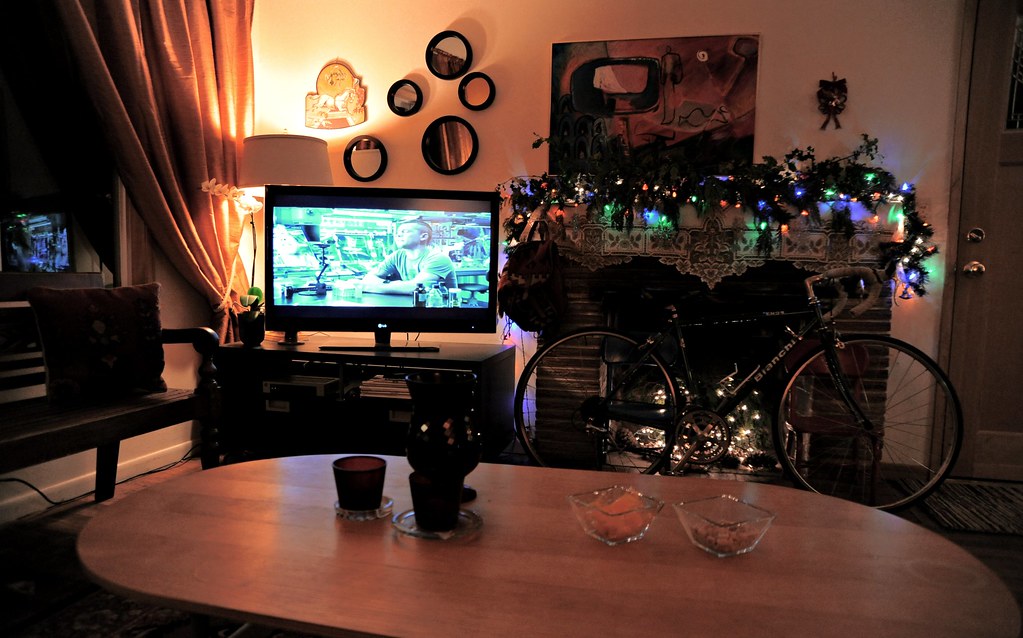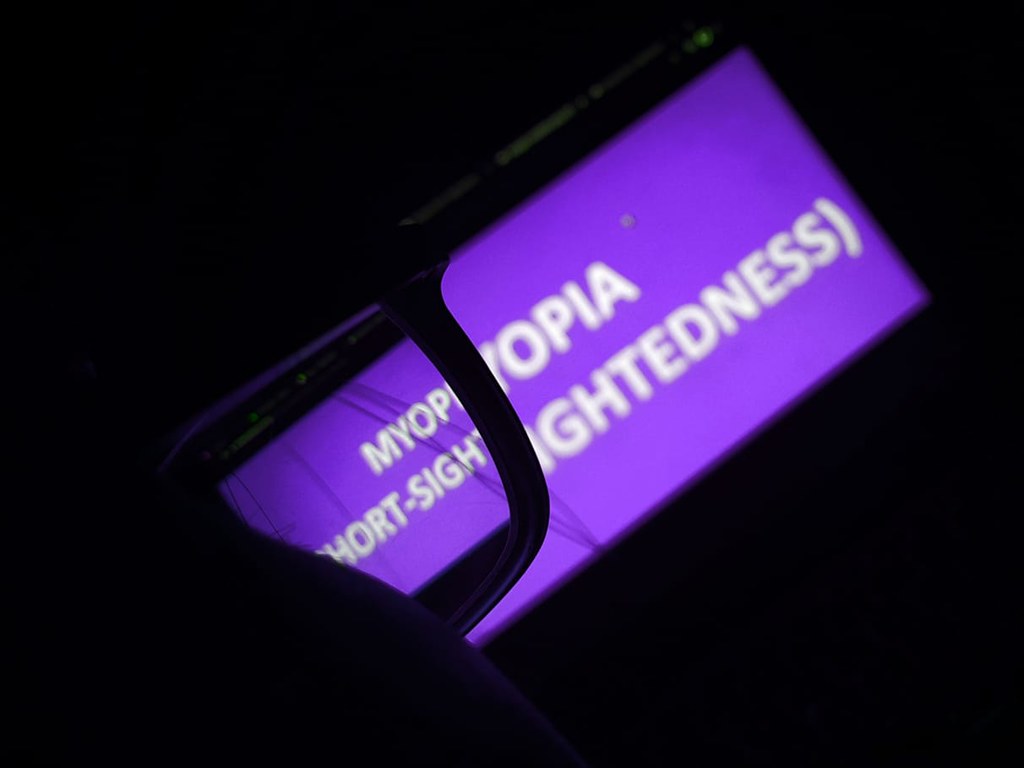
In an age where our smartphones are almost an extension of ourselves, it’s easy to overlook the subtle, yet significant, impact these devices can have on our health, particularly our eyesight. The pervasive presence of digital screens, from the moment we wake up until we drift off to sleep, has woven itself into the fabric of daily life for millions. Recent data paints a vivid picture of this immersion: the average smartphone user checks their phone a staggering “144 times a day,” accumulating around “4.5 hours of screen time each day.” These figures aren’t just statistics; they represent a fundamental shift in how we interact with the world, a shift that brings with it new challenges for our vision.
While the convenience and connectivity offered by smartphones are undeniable, such substantial screen time is not without consequences. Many of us have experienced that familiar discomfort after a prolonged scrolling session — tired, dry, or blurry eyes. This isn’t merely anecdotal; it’s a phenomenon known as digital eye strain, and it’s becoming an increasingly common complaint among eye doctors. Understanding the mechanisms behind this strain, and more importantly, what we can actively do to mitigate it, is crucial for preserving our long-term eye health in this digital landscape.
This article aims to shed light on the specific ways our smartphone habits can contribute to eye discomfort and potential vision changes. We’ll explore the immediate factors that lead to strain, from the sheer volume of screen time to the subtle nuances of how we hold our devices and interact with their displays. By identifying these key areas, we can empower ourselves with the knowledge needed to make conscious choices that protect our precious vision against the silent, persistent demands of our digital companions. Let’s embark on this journey to understand and safeguard your eyesight.

1. The Pervasiveness of Excessive Screen Time
One of the most significant contributors to eye discomfort in the digital age is simply the sheer volume of time we spend staring at screens. The average American’s daily screen time reportedly reaches “seven hours and three minutes,” a figure that highlights the deeply ingrained nature of device use in our lives. This extensive exposure is a primary factor in the development of digital eye strain and can trigger a cascade of issues for our vision. When you’re constantly focused on a screen, your eyes are working harder to accommodate, leading to fatigue and discomfort.
Prolonged screen time goes beyond just immediate strain; it has been implicated in longer-term issues as well. Research has suggested a link between extended smartphone use and conditions like dry eye syndrome and myopia, particularly in children and adolescents. The continuous near-focus required by small screens can train the eyes to accommodate nearby objects, potentially impairing the ability to see distant objects clearly as the visual system develops. This highlights why managing screen time isn’t just about comfort, but about foundational eye health.
It’s important to acknowledge that this isn’t just about smartphones. Overuse of other digital devices, such as computers and tablets, also plays a significant role in overall screen exposure. Some studies have found associations between increased computer use and myopia development in children, further emphasizing that total screen time across all devices warrants attention. The cumulative effect of these various digital engagements necessitates a holistic approach to understanding and managing our screen habits.
Reducing screen time, if possible, is one of the most direct and effective steps you can take. Many smartphone applications and operating systems now offer built-in features to track your usage and even set timers for specific apps. When you decide to step away from your screen, engaging in an alternative activity—such as reading a physical book, walking your pet, or playing a board game—can help break the cycle and prevent the temptation to immediately check your phone again. This conscious effort to detach can provide much-needed rest for your eyes and a broader benefit to your overall well-being.
However, there’s a nuanced debate around whether screen time is a direct cause or a proxy for other factors. Some research suggests that the amount of time spent outdoors is more critical, with less outdoor time being associated with an increased risk of myopia. If digital screen time replaces outdoor activities, it might be the lack of outdoor time, rather than the screen time itself, that contributes to vision changes. This complexity underscores the need for continued research while still prioritizing reduced screen time and healthy habits as preventive measures.

2. The Danger of Close Proximity and Poor Posture
Beyond the duration of screen time, *how* we use our smartphones profoundly impacts our eyes. Maintaining a close proximity to your screen, often combined with poor positioning and posture, creates additional strain on your visual system. When you hold a small device like a smartphone too close to your face, your eyes have to work harder to converge and focus, leading to increased accommodative effort. This intense, sustained focus on a nearby object can contribute significantly to digital eye strain and discomfort.
Poor screen positioning and posture are often intertwined with close viewing distances. Many users habitually look down at their phones, creating a hunched posture that not only affects the neck and shoulders but can also indirectly strain the eyes. The awkward angles created by such posture can place unnecessary tension on the physical structures supporting vision. The ideal viewing distance for a screen is typically around “25 inches away, just below eye level,” a far cry from how many of us instinctively hold our phones.
For children, the concern around close proximity is even greater. “Focusing too closely on screens may contribute to the development and/or progression of myopia” in children, whose eyes are still developing. When a child consistently holds a screen too close, it “trains” their eyes to focus predominantly on nearby objects. This can potentially impair their ability to see distant objects clearly, a crucial aspect of healthy visual development. Encouraging proper distance from a young age is therefore vital.
To combat these issues, adjusting your screen positioning is a practical and immediate step. Aim to hold your phone at an arm’s length away, roughly “25 inches away, just below eye level.” This seemingly minor adjustment can significantly reduce the strain on your eye muscles and alleviate discomfort. It also encourages a more upright posture, providing broader ergonomic benefits that contribute to overall comfort and reduce physical tension in the neck and shoulders, which can otherwise exacerbate eye strain.
Furthermore, be mindful of your overall posture when using your phone. Avoid craning your neck or slouching. Maintaining good posture not only supports your spine but also optimizes the viewing angle to your screen, minimizing the need for your eyes to overcompensate. Simple awareness of how you hold your device and position your body can make a substantial difference in preventing eye strain and associated physical discomforts, transforming a detrimental habit into a more benign interaction with your technology.

3. The Critical Role of Blinking (Or Lack Thereof)
One of the most fundamental, yet frequently overlooked, aspects of eye health during screen use is blinking. When we’re deeply focused on a smartphone screen, our natural blink rate significantly decreases. “We blink up to 66% less when staring at screens,” leading directly to a reduction in the natural lubrication of our eyes. This decreased blinking means our eyes receive less moisture, which is essential for keeping them healthy and comfortable. The result is often a sensation of dryness, irritation, and discomfort, common symptoms of digital eye strain.
Blinking is a vital reflex that distributes the tear film evenly across the surface of the eye, cleaning it and keeping it moist. Each blink is like a refresh button for our eyes, preventing dryness and protecting them from irritants. When this natural process is disrupted by prolonged screen engagement, the tear film can evaporate too quickly, leading to symptoms consistent with dry eyes. This contributes to the overall feeling of fatigue and strain that many users report after extended phone sessions.
This phenomenon is a significant contributor to dry eye disease (DED), a chronic condition where your eyes don’t make enough tears or when your tears evaporate too quickly. While DED can stem from various factors including age and environment, certain studies “have indicated that excessive smartphone use can lead to dry eye disease in children and adults.” The reduced blink rate while engrossed in a screen can initiate or worsen the cycle of dryness, making it a critical factor to address for long-term ocular comfort.
To counteract this, consciously reminding yourself to blink regularly is a simple yet powerful strategy. Make it a deliberate action, especially during prolonged periods of phone use. You might even incorporate specific blinking exercises, such as closing your eyes firmly for a few seconds and then opening them, to help stimulate tear production and ensure adequate moisture. This proactive approach can significantly alleviate dryness and irritation, helping to maintain a healthy tear film across your eyes.
Beyond conscious blinking, ensuring proper hydration for your body can also indirectly support eye moisture. Drinking enough water throughout the day contributes to overall bodily fluid balance, including tear production. If dryness persists despite regular blinking and hydration, over-the-counter artificial tears can provide temporary relief by supplementing your natural tear film. Integrating these practices into your daily routine can make a considerable difference in managing and preventing eye discomfort caused by reduced blinking during smartphone use.

4. The Overlooked Impact of Screen Brightness and Glare
The visual characteristics of your phone screen, specifically its brightness and the presence of glare, play a critical role in how your eyes perceive and process information, directly influencing eye comfort. A screen that is excessively bright, especially in a dark environment, can cause your eyes to work harder to adjust between the intense light of the display and the dimness of your surroundings. This constant effort to adapt leads to increased eye fatigue and discomfort, making your eyes feel tired much faster than they otherwise would.
Conversely, a screen that is too dim in a brightly lit environment can also contribute to strain, forcing your eyes to squint and struggle to discern text and images. The ideal scenario is for your screen brightness to “match the lighting in your surroundings.” This balance allows your eyes to transition more smoothly between the screen and your environment, reducing the strenuous accommodation required when there’s a high contrast between the light on your screen and the light in your environment. Adjusting this setting is a straightforward, yet highly effective, preventive measure.
Glare is another significant factor that can exacerbate eye strain. Whether it’s from direct sunlight streaming through a window or reflections from overhead lights, glare on your screen creates bright spots that force your eyes to contend with distracting light. This reflective interference makes it more difficult to see content clearly, increasing visual effort and leading to fatigue, irritation, and even headaches. The continuous battle against glare can be particularly taxing on your eyes, intensifying the symptoms of digital eye strain.
To mitigate these issues, actively adjusting your screen settings is paramount. Regularly modify your phone’s brightness to suit your ambient lighting conditions. In darker environments, consider utilizing the “night mode or dark mode setting” on your smartphone, which typically reduces blue light emission and switches to a darker color scheme, making viewing more comfortable. Many phones also offer adaptive brightness features that automatically adjust to your environment, which can be a helpful tool.
Beyond software settings, physical adjustments can also reduce glare. Position yourself so that light sources are not directly reflecting off your screen. If possible, avoid using your phone in direct sunlight or under harsh overhead lights. Investing in an anti-glare screen protector can also provide a physical barrier against reflections, further enhancing visual comfort and minimizing the strain caused by competing light sources. These simple environmental and setting modifications can create a much more eye-friendly viewing experience, protecting your vision from unnecessary stress.
Read more about: Avoid These Critical Mistakes: Your Definitive Guide to Buying the Perfect New TV

5. Understanding Digital Eye Strain: Your Body’s Immediate Warning
Digital eye strain, also known as Computer Vision Syndrome, is the collective term for the discomfort and vision problems that arise from prolonged viewing or use of digital screens, including smartphones. It’s your body’s immediate and undeniable signal that your eyes are being overworked. While usually temporary, the symptoms are very real and can significantly impact your daily comfort and productivity. The constant focus on small text and images, combined with factors like high screen brightness, puts considerable stress on your eyes, forcing them to accommodate under challenging conditions.
Recognizing the symptoms of digital eye strain is the first step toward addressing the problem. When the light-sensitive tissue at the back of the eye, the retina, is exposed to the bright screen, it can cause a range of short-term effects. These commonly include “eye strain,” “irritation,” “pain or discomfort in the eyes,” and “tired eyes.” Many individuals also report “blurred vision” after extended sessions, along with “headaches,” and sensations of “dry eyes” or even “watery eyes.” These symptoms are a clear indication that your eyes need a break and a change in your usage habits.
Several factors directly contribute to the onset of digital eye strain. As we’ve discussed, “prolonged screen time,” “close proximity to your screen,” “poor screen positioning and posture,” “high contrast between the light on your screen and the light in your environment,” and “glare from a bright screen” all play a role. Additionally, the reduced blink rate, where you “may not blink as much as you need to” when focused on your screen, significantly contributes to eye strain and dryness, further intensifying the discomfort experienced.
While the condition is typically temporary and does not lead to permanent eye damage, ignoring these warning signs can lead to chronic discomfort and potentially aggravate existing vision issues. If you find your eyes hurting frequently when looking at phone screens, it’s a strong signal to “consider cutting back or modifying your smartphone usage.” Persistent symptoms, or those lasting for more than a few days, warrant a consultation with your eye doctor to rule out any underlying conditions and to receive personalized advice for relief.
Effectively managing digital eye strain involves a multi-pronged approach that integrates several protective measures. Taking frequent breaks is paramount; the “20-20-20 rule” is an excellent guideline where every 20 minutes, you take a 20-second break and focus on an object at least 20 feet away. Adjusting screen brightness, ensuring proper screen positioning, and being mindful of your blink rate are all crucial components. By understanding and actively responding to the immediate warnings of digital eye strain, you can prevent discomfort and maintain better eye health in your daily digital interactions.
Having explored the immediate triggers and warning signs, our journey now delves deeper into the physiological impacts on vision and the long-term implications that stem from our digital habits. We’ll uncover how specific elements, like blue light, affect our eyes and sleep, and scrutinize chronic conditions such as dry eye syndrome and myopia. Finally, we’ll equip you with a comprehensive guide of actionable protective measures to safeguard your precious eyesight in this increasingly digital world. Understanding these underlying mechanisms is crucial for making informed choices that protect your vision for years to come.

6. The Intriguing Impact of Blue Light Emission
Blue light, a component of the visible light spectrum, is naturally present in sunlight. However, the blue light emitted from our phone screens has become a topic of significant concern, particularly regarding its potential impact on eye health and sleep patterns. While blue light itself is not inherently harmful, prolonged exposure, especially during evening hours, can have noticeable effects.
One of the most widely discussed impacts of blue light is its ability to disrupt our circadian rhythm. Studies have shown that sustained exposure to blue light, particularly at night, can suppress the production of melatonin. Melatonin is a crucial hormone responsible for regulating our sleep-wake cycle, and its suppression can lead to difficulties falling asleep and contribute to poor sleep quality.
Moreover, blue light exposure has been linked to an exacerbation of digital eye strain symptoms. It can contribute to the sensations of dry eyes, headaches, and blurred vision that many users experience after extended screen time. While the scientific evidence doesn’t conclusively prove permanent eye damage from blue light, its role in increasing eye strain and disrupting sleep is well-documented.
To mitigate these effects, experts recommend several proactive steps. Utilizing blue light filters on your smartphone screen can help reduce the amount of blue-violet light reaching your eyes. Many devices also offer “night mode or dark mode settings” that shift the screen’s color temperature to warmer tones, which can be particularly beneficial in darker environments and before bedtime.
Taking regular breaks from your screen and maintaining proper ambient lighting in your surroundings also play a vital role. By consciously managing your exposure and employing available protective features, you can significantly lessen blue light’s disruptive potential. These simple adjustments contribute to more comfortable viewing and better overall sleep hygiene.
Read more about: Ford’s Strategic Realignment: Unpacking Plant Closures, Job Cuts, and the EV Transition Reshaping the Global Automotive Landscape

7. Dry Eye Syndrome: A Persistent Challenge in the Digital Age
Beyond the temporary discomfort of dry eyes that can occur during a single long screen session, prolonged smartphone use has been identified as a potential risk factor for the development and progression of chronic Dry Eye Disease (DED). While reduced blinking is an immediate contributor to eye dryness, DED represents a more enduring condition where the eyes either don’t produce enough tears or their tears evaporate too quickly.
Symptoms of DED extend beyond simple dryness. Individuals may experience a chronic stinging or burning sensation in their eyes, along with increased light sensitivity. Blurred vision can also be a persistent symptom, impacting daily activities and overall visual comfort. These symptoms can collectively make daily smartphone use, and indeed any visual task, quite challenging.
What makes DED particularly concerning is its potential to worsen in a self-perpetuating cycle that is difficult to reverse once established. Once a person develops dry eye syndrome, the ongoing irritation and inflammation can create a feedback loop, making symptoms more severe and persistent. This underscores the critical importance of early intervention and preventive measures.
Research, though needing further validation, has “indicated that excessive smartphone use can lead to dry eye disease in children and adults.” The reduced blink rate, coupled with the intense focus required by small screens, creates an environment conducive to tear film instability and accelerated evaporation. This persistent stress on the ocular surface contributes to the development of DED.
Protecting against DED involves a holistic approach. Minimizing prolonged screen time is a primary strategy to avoid triggering its symptoms. Ensuring proper hydration and consciously blinking regularly can support your natural tear production. If symptoms persist or become chronic, consulting an eye doctor is essential for proper diagnosis and management, which may include artificial tears or other treatments.

8. Myopia (Nearsightedness): The Alarming Link to Developing Eyes
Myopia, commonly known as nearsightedness, is a vision condition where close objects appear clear, but distant objects are blurry. This condition has garnered significant attention in the context of increased digital device usage, particularly concerning children and adolescents whose visual systems are still in crucial stages of development. The way we interact with our smartphones can inadvertently contribute to its onset or progression.
A key mechanism behind this link is the sustained close-up focusing required by smartphone screens. When a child consistently holds a screen too close to their face, it effectively “trains” their eyes to focus predominantly on nearby objects. This continuous near-focus can impair their ability to see distant objects clearly as their visual system develops, impacting their long-term vision.
Scientific research has begun to shed light on this relationship. A meta-analysis of over 45 studies, published in JAMA Network Open, found “direct ties to screen time and myopia.” The researchers concluded that “just one additional hour of daily screen time increased the chances of developing myopia by 21%,” even for those with seemingly low screen time (one to four hours a day).
While some studies acknowledge that other factors like genetics, education, and reduced outdoor time also contribute to myopia prevalence, the association with screen time, particularly in developing eyes, remains a significant concern. The cumulative effect of hours spent focusing intensely on small, nearby screens appears to be a notable risk factor.
To safeguard against myopia, especially in younger individuals, encouraging appropriate viewing distances is paramount. Parents and caregivers should ensure children hold devices at an arm’s length and promote frequent breaks. Balancing screen time with ample outdoor activity, which provides valuable distance viewing and natural light exposure, is considered a crucial preventive strategy for healthy visual development.

9. Beyond Vision: Broader Health Implications of Smartphone Overuse
While the primary focus is on eyesight, it’s vital to acknowledge that excessive smartphone use can ripple outwards, impacting other aspects of our overall health and well-being. The sustained behaviors associated with phone overuse, such as poor posture and constant engagement, contribute to a broader spectrum of physical and mental health challenges that indirectly affect our daily comfort and productivity.
One notable impact is on physical posture. Habitually looking down at your phone for extended periods can lead to a hunched posture. This not only causes strain in the neck and shoulders but can also contribute to discomfort that distracts from other tasks. Over time, poor posture can lead to chronic musculoskeletal issues, underscoring the interconnectedness of our physical habits.
Furthermore, the constant demands of a smartphone—from frequent social media alerts to text messages and emails—can create a persistent sense of urgency. This pervasive digital presence can make it challenging to truly detach, leading to increased feelings of stress and anxiety. Mental health impacts are a critical consideration in our digital lives, influencing our ability to relax and maintain focus.
The context also highlights that chronic discomfort from prolonged eye strain, if habits don’t change, can potentially “aggravate existing vision issues or lead to earlier onset of presbyopia.” While screens don’t cause permanent damage, the sustained stress on the visual system can worsen pre-existing conditions and accelerate natural age-related vision changes.
Therefore, addressing smartphone overuse extends beyond just protecting your eyes; it’s about nurturing your entire well-being. Recognizing these broader implications allows for a more holistic approach to managing digital device interaction. Prioritizing breaks, ergonomic setup, and mental detachment can lead to improved physical comfort, reduced stress, and ultimately, a healthier relationship with technology.

10. Your Comprehensive Toolkit: Actionable Strategies for Lifelong Eye Health
In the digital age, where smartphone interaction is largely unavoidable, proactive steps are essential to protect your eyes from strain and potential long-term issues. Rather than cutting out technology entirely, the focus should be on integrating smart habits that minimize risk and promote lifelong eye health. This comprehensive toolkit consolidates the most effective strategies to keep your vision sharp and comfortable.
A foundational strategy, already introduced, is the “20-20-20 rule.” This involves taking a 20-second break every 20 minutes of screen use and focusing on an object at least 20 feet away. This simple yet powerful practice gives your eye muscles a much-needed break from sustained near-focus, helps reset your blink rate, and promotes tear distribution.
Beyond breaking habits, optimizing your viewing environment is crucial. This includes adjusting your phone’s brightness to “match the lighting in your surroundings” and employing “night mode or dark mode setting” in dim light to reduce blue light exposure. Minimizing glare by positioning yourself away from direct light sources or using an anti-glare screen protector can also significantly reduce strain.
Regular eye check-ups are an indispensable part of comprehensive eye care. Even if you don’t experience symptoms, routine exams ensure that your eyes are in good health and allow for early detection of any changes in vision or underlying conditions. Your optometrist can provide personalized advice and identify the right relief for any persistent symptoms.
Finally, integrating overall healthy lifestyle choices supports eye health. Staying hydrated by drinking enough water throughout the day contributes to adequate tear production. Making a conscious effort to reduce overall screen time, by engaging in alternative activities like reading a physical book or pursuing outdoor hobbies, offers a holistic approach to safeguarding your vision and general well-being in the digital era.
The pervasive presence of smartphones in our lives presents both incredible opportunities and undeniable challenges for our vision. While scientific evidence currently suggests that phones don’t cause permanent eye damage, the reality of digital eye strain, chronic dry eyes, and the potential impact on myopia development, especially in children, is very real. By understanding the factors at play and embracing actionable protective measures—from conscious blinking and screen adjustments to the 20-20-20 rule and regular eye exams—we can navigate this digital landscape responsibly. Empower yourself with these strategies, and ensure your eyes remain healthy, focused, and fatigue-free for years to come. Your vision is priceless; make conscious choices today to protect it tomorrow.



